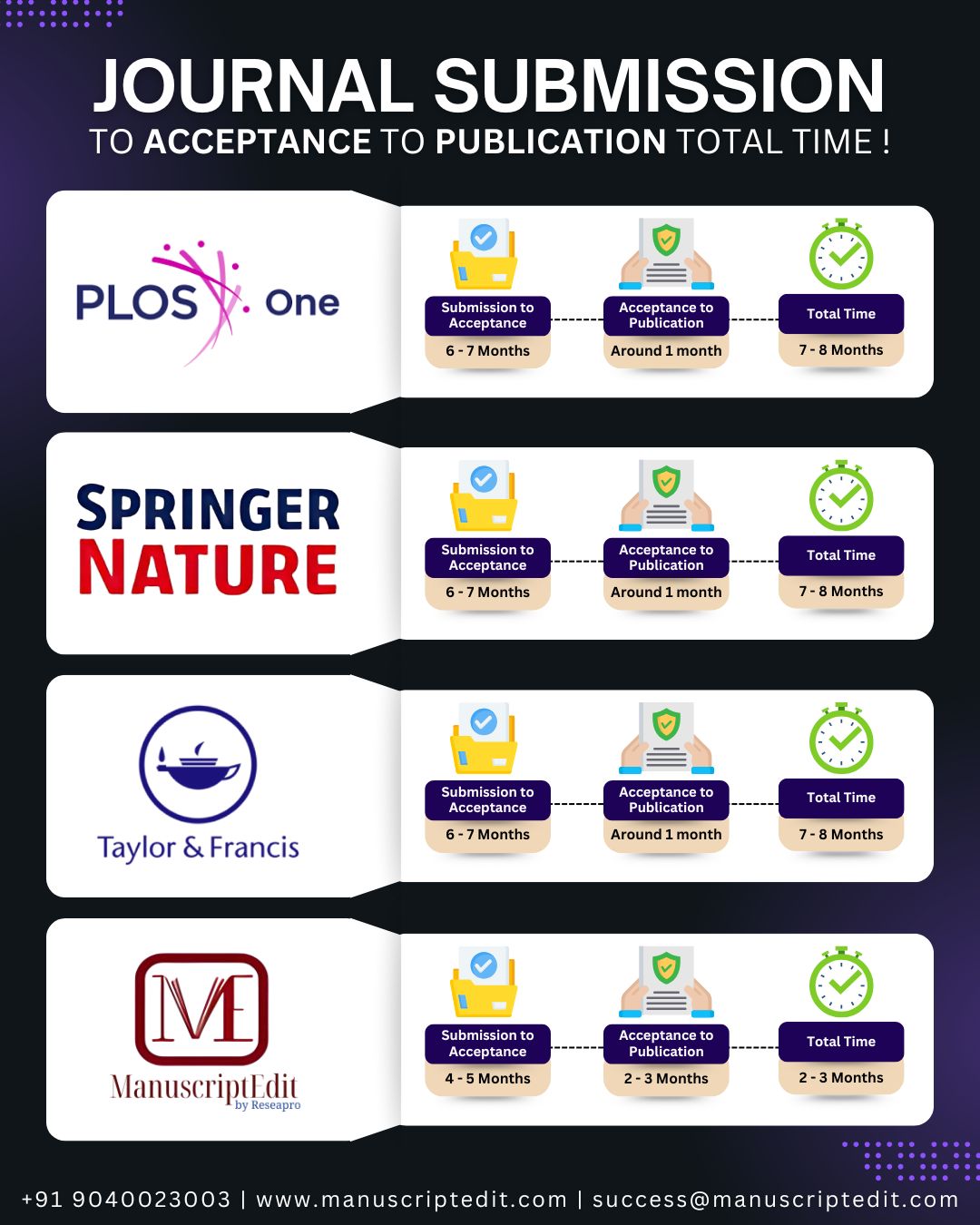Publishing a research paper is a milestone in every scholar’s career. However, it can also be a frustrating and slow process. Most researchers go through delays spanning months, from the date of submitting their manuscript to the date of its actual publication. While some delays are inherent, there are sensible ways to reduce the time your paper spends in the research publication process.

This blog deconstructs seven easy and efficient steps that can assist you in publishing your paper quickly. These steps are derived from actual data and the experiences of leading publishers such as PLOS ONE, Springer Nature, and Taylor & Francis. By adhering to them, you can steer clear of typical pitfalls, leave a positive impression on editors and reviewers, and navigate the process with less anxiety.
How Long Does the Publication Process Usually Take?
We considered information from three of the biggest publishers to get a sense of how long it takes on average for the publication process to take:
Publisher Submission to Acceptance to Publication Total Time

As you can see, there is a massive difference in timelines. Yet, taking proactive measures can boost your chances of quicker publication.
Step 1: Select the Right Journal for Research Publication
The most crucial and first step is selecting a journal that aligns with your research subject and has a reasonable review cycle. If you submit your manuscript to a journal unsuited for your subject, your paper could be rejected or held up.
How to do it right:
- Review the journal’s subject matter and published articles.
- Consider their average publication and review times.
- Ensure the journal accepts the type of article you’re submitting (original research, review, case study, etc.).
You can also use journal selection services like Manuscriptedit to save time and find the best match for your paper.
Step 2: Perfectly Follow Research Publication Guidelines
Most papers are rejected in the initial stage—not due to the content but because the authors neglected submission guidelines. Every journal differs in formatting, word limit, style of reference, and required sections.
Do the following:
- Fetch the author guidelines from the journal’s site.
- Prepare your manuscript precisely as needed.
- Ensure you double-check whether there should be sections such as ethics approval, conflict of interest, or data availability statements.
If unsure, services like Manuscriptedit’s editing packages can help ensure your manuscript meets all technical and formatting requirements.
Step 3: Write a Clear and Polished Manuscript
A well-written paper is easier to review and more likely to be accepted quickly. Reviewers and editors are busy professionals. If your paper is hard to read or unclear, it may be returned for revisions or even rejected.
To improve clarity:
- Use precise and straightforward language.
- Avoid grammatical mistakes, awkward sentences, and lengthy sentences.
- Ensure the paper logically flows from the introduction to the conclusion.
If writing is not your forte, consider seeking assistance from professional scientific editing services to refine your manuscript.
Step 4: Write a Persuasive Cover Letter
Your cover letter is your initial chance to impress the editor strongly. An effective cover letter clarifies your research, why it’s essential, and why it’s a good candidate for the journal.
Be concise and straightforward:
- Refer to the title of your manuscript.
- Briefly discuss your key findings and significance.
- Explain why the manuscript is appropriate for the journal.
Professional editing of cover letters may be beneficial if you’re not confident about the tone or the layout.
Step 5: Respond Promptly and Graciously to Reviewers
When you get reviewer comments, your next action will be important. Delaying a response or ignoring comments can slow the process down or even result in rejection.
Best practices for response:
- Respond immediately — ideally within the journal-recommended time frame.
- Tackle each comment point by point.
- Be courteous, even if you disagree with a reviewer’s recommendation.
- Ensure that you indicate changes in your revised manuscript.
Reviewer response aid services can assist you in writing detailed and polite responses that enhance your chances of acceptance.
Step 6: Use Preprint Servers
Posting your paper on a preprint server is an intelligent method of making your research available early. This can make your work visible while it is still being reviewed.
What to know:
- Preprint servers such as arXiv, bioRxiv, and medRxiv enable you to upload a preprint version of your paper.
- A few journals permit preprints, but others do not — always check their policy first before uploading.
In case of uncertainty, request a professional service to verify if your destination journal welcomes preprinted submissions.
Step 7: Obtain End-to-End Publication Support
Occasionally, taking care of the whole publication process can feel overwhelming — particularly if you’re new to publishing scholarly work or handling multiple manuscripts. If so, end-to-end publication support can be ideal.
These services often include:
- Journal selection
- Manuscript formatting
- Scientific and language editing
- Writing a cover letter
- Reviewer response assistance
Final submission guidance
Selecting such a package can significantly lower errors, delays, and rework — and accelerate your achievement of publication targets.
Final Thoughts: Publish Smarter, Not Just Faster
The publication process does not need to be a source of frustration and angst. Although you have no say in how long it takes for a journal to review your manuscript, you can control how prepared your submission will be.
Through the use of these seven steps:
- Selecting the correct journal,
- Compliance with submission guidelines,
- Writing a practical and refined manuscript,
- Composing an effective cover letter,
- A rapid, detailed response to reviewers,
- Appropriate utilization of preprint servers,
- Receiving professional publication assistance, when necessary,
you can significantly shorten the time it takes to have your research published. These tactics not only make it go faster — but they also enhance your prospects for acceptance and decrease the stress and confusion that are all too often part of academic publishing.
If you are willing to advance to the next stage of your research process, check out the support services available at https://manuscriptedit.com. With the help of professionals, you can save time, steer clear of pitfalls, and have your work published earlier.



